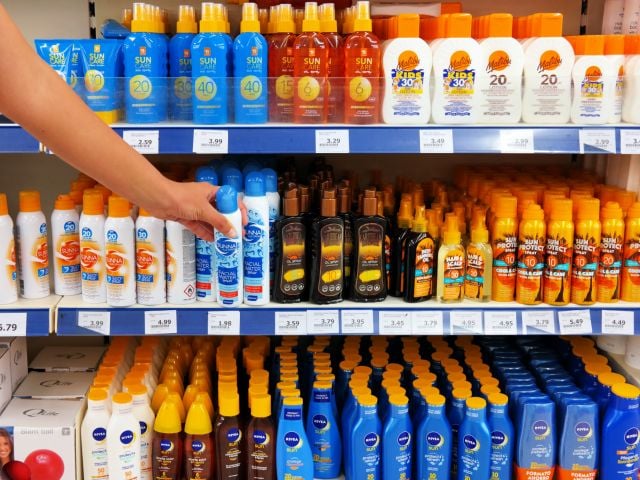
Pretty much all I knew about sunscreen growing up was that SPF was some measure of how much sunburn protection came out of the bottle. Hard to believe that (way back) in those days the great debate was "6 or 8," not 30 or 50 (or 100!). We even busted out the baby oil on occasion (oh, the teen years!).
In case you, too, wonder exactly what "Sun Protection Factor" does, or how much you need, or whether it's a meaningful measure - and of what, these 4 questions are for you:
1. What does "SPF" really mean? SPF (Sun Protection Factor) is a measurement of sunburn protection, which is primarily from UVB rays. If your skin would normally burn after 10 minutes in the sun, for example, wearing an SPF 15 sunscreen would theoretically allow you to stay in the sun for 150 minutes (10 x 15) without burning.
This is a rough estimate, however, and your own skin, the type of activity you do in the sun (i.e. one involving water or sweat), and the intensity of sunlight may give you more or less safety. Note that SPF ratings can be confusing or misleading at times.
For example, the rating tells you about UVB protection, but nothing about protection from also harmful UVA rays which cause photo-aging and cancer. In addition, The Food and Drug Administration has expressed concerns that current testing methods may not be able to accurately and reproducibly determine SPF values for high SPF products.
2. How high of an SPF should I use? Pick the SPF appropriate for your skin type and solar exposure. But remember that UVA protection in U.S. sunscreens maxes out at about 15, so higher SPF products will not fully protect your skin from sun damage.
The American Cancer Society recommends that people use a sunscreen with a SPF of at least 15, the American Academy of Dermatology opts for 30. Avoid sunscreens with SPF numbers higher than 50. More important than seeking out ultra-high SPF products is that you apply your sunscreen generously -- most people put on only a 1/4 to 2/3rds enough sunscreen to actually reach the product's SPF rating.
3. I use decent sunscreen with SPF 50, why do I still get burnt in the sun? With proper usage of an SPF 50 sunscreen you should be able to get 50 times the solar exposure before burning had you not been wearing sunscreen. Proper usage ensures that you are applying sunscreen 20-30 minutes before solar exposure, applying ~1 ounce for your entire body (which is more than you think!), and reapplying frequently. Make sure to reapply every 2 hours and after swimming, sweating or toweling off.
According to a recent study applying half the recommended amount of an SPF 50 sunscreen will only provide SPF 7 protection, so make sure to use enough.
4. What's wrong with high SPF? Theoretically, applying SPF 100 sunscreen allows beachgoers to bare their skin to sunshine a hundred times longer before causing the skin to burn: Someone who would normally redden in 30 minutes could remain in the sun for 50 hours before a burn would appear. But for high-SPF sunscreens, theory and reality are two different things. Here's what's wrong with high-SPF sunscreens:
- Extended sun exposure, same number of sunburns. Users of high-SPF sunscreens stay in the sun longer with a single application and get burned when the product's chemicals break down, wash off or rub off on clothes and towels. Armed with a false sense of security, they extend their time in the sun well past the point when users of low-SPF products head indoors.
- Increased exposure to potentially hazardous ingredients. High-SPF products contain greater amounts of sun-blocking chemicals than low-SPF sunscreens.
- SPF factors are based on two-to-five times more sunscreen than people actually use. In the real world, people get far less protection than the bottle advertises. In fact, people apply one-half to one-fifth the amount of sunscreen used in the laboratory SPF tests. Because of the physics of sunlight, that cuts the protection factor not by a factor of just 2 to 5, but by between the square root and the fifth root of the SPF.



